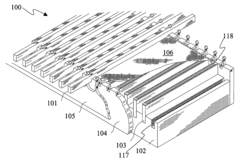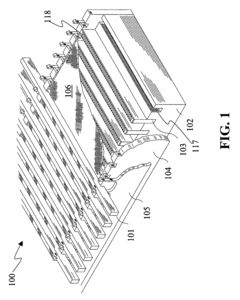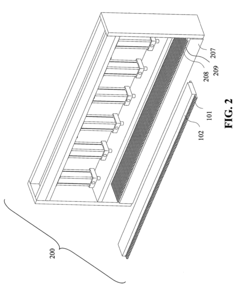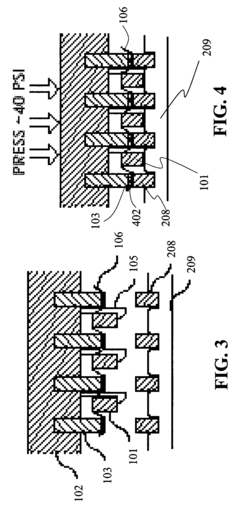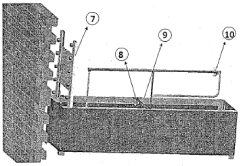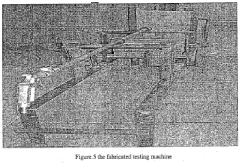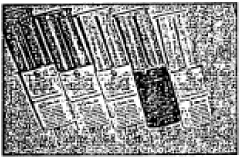How to Optimize Kevlar Weaving Techniques for Increased Toughness?
JUL 10, 20259 MIN READ
Generate Your Research Report Instantly with AI Agent
Patsnap Eureka helps you evaluate technical feasibility & market potential.
Kevlar Weaving Evolution and Objectives
Kevlar, a high-strength synthetic fiber developed by DuPont in the 1960s, has revolutionized the field of protective materials. The evolution of Kevlar weaving techniques has been driven by the continuous pursuit of enhanced toughness and performance in various applications, from body armor to aerospace components.
Initially, Kevlar weaving focused on basic plain weave structures, which provided a foundation for understanding the material's behavior under stress. As research progressed, more complex weaving patterns emerged, such as twill and satin weaves, which offered improved flexibility and impact resistance. The 1980s saw the introduction of 3D weaving techniques, marking a significant leap in Kevlar fabric construction and opening new possibilities for customized strength profiles.
The advent of computerized looms in the 1990s enabled precise control over weave patterns and tension, allowing for the development of hybrid weaves that combine Kevlar with other high-performance fibers. This era also witnessed the exploration of nano-scale modifications to Kevlar fibers, aiming to enhance their inherent properties at the molecular level.
Recent advancements have focused on optimizing fiber orientation and creating multi-layered structures to maximize energy absorption and distribute impact forces more effectively. The integration of smart materials and sensors into Kevlar weaves represents the cutting edge of current research, promising adaptive and responsive protective systems.
The primary objective in Kevlar weaving optimization is to increase toughness without compromising other critical properties such as flexibility and weight. This involves a multifaceted approach, addressing fiber alignment, inter-fiber friction, matrix bonding, and overall fabric architecture. Researchers aim to develop weaving techniques that can tailor the material's performance to specific threat levels and environmental conditions.
Another key goal is to enhance the manufacturability of high-performance Kevlar fabrics, focusing on scalable production methods that maintain consistent quality. This includes improving weaving speeds, reducing waste, and developing more efficient quality control processes.
The future of Kevlar weaving lies in creating "smart" fabrics that can adapt to different stress conditions in real-time. Objectives in this area include incorporating shape-memory alloys or piezoelectric materials into the weave to create dynamic, responsive structures. Additionally, there is a growing emphasis on sustainable manufacturing practices, driving research into bio-based alternatives and recycling methods for Kevlar products.
As the demand for high-performance protective materials continues to grow across various industries, the evolution of Kevlar weaving techniques remains a critical area of research and development. The ongoing objectives focus on pushing the boundaries of material science to create tougher, more versatile, and increasingly sophisticated Kevlar-based fabrics.
Initially, Kevlar weaving focused on basic plain weave structures, which provided a foundation for understanding the material's behavior under stress. As research progressed, more complex weaving patterns emerged, such as twill and satin weaves, which offered improved flexibility and impact resistance. The 1980s saw the introduction of 3D weaving techniques, marking a significant leap in Kevlar fabric construction and opening new possibilities for customized strength profiles.
The advent of computerized looms in the 1990s enabled precise control over weave patterns and tension, allowing for the development of hybrid weaves that combine Kevlar with other high-performance fibers. This era also witnessed the exploration of nano-scale modifications to Kevlar fibers, aiming to enhance their inherent properties at the molecular level.
Recent advancements have focused on optimizing fiber orientation and creating multi-layered structures to maximize energy absorption and distribute impact forces more effectively. The integration of smart materials and sensors into Kevlar weaves represents the cutting edge of current research, promising adaptive and responsive protective systems.
The primary objective in Kevlar weaving optimization is to increase toughness without compromising other critical properties such as flexibility and weight. This involves a multifaceted approach, addressing fiber alignment, inter-fiber friction, matrix bonding, and overall fabric architecture. Researchers aim to develop weaving techniques that can tailor the material's performance to specific threat levels and environmental conditions.
Another key goal is to enhance the manufacturability of high-performance Kevlar fabrics, focusing on scalable production methods that maintain consistent quality. This includes improving weaving speeds, reducing waste, and developing more efficient quality control processes.
The future of Kevlar weaving lies in creating "smart" fabrics that can adapt to different stress conditions in real-time. Objectives in this area include incorporating shape-memory alloys or piezoelectric materials into the weave to create dynamic, responsive structures. Additionally, there is a growing emphasis on sustainable manufacturing practices, driving research into bio-based alternatives and recycling methods for Kevlar products.
As the demand for high-performance protective materials continues to grow across various industries, the evolution of Kevlar weaving techniques remains a critical area of research and development. The ongoing objectives focus on pushing the boundaries of material science to create tougher, more versatile, and increasingly sophisticated Kevlar-based fabrics.
Market Demand Analysis for High-Toughness Kevlar
The market demand for high-toughness Kevlar has been steadily increasing across various industries due to its exceptional strength-to-weight ratio and durability. The automotive sector, in particular, has shown significant interest in optimized Kevlar weaving techniques for increased toughness. This demand is driven by the need for lightweight yet robust materials in vehicle manufacturing to improve fuel efficiency and safety standards.
In the aerospace industry, the quest for materials that can withstand extreme conditions while maintaining minimal weight has led to a growing demand for advanced Kevlar composites. The optimization of weaving techniques to enhance toughness is crucial for applications in aircraft components, spacecraft structures, and satellite technologies.
The defense and law enforcement sectors continue to be major consumers of high-toughness Kevlar products. The demand for improved body armor, helmets, and protective gear has pushed manufacturers to explore innovative weaving techniques that can offer enhanced protection against ballistic threats and high-impact forces.
The sports and recreation industry has also shown increased interest in high-toughness Kevlar applications. From high-performance sporting equipment to extreme sports gear, manufacturers are seeking ways to incorporate optimized Kevlar weaves to improve product durability and user safety.
In the industrial sector, there is a growing demand for high-toughness Kevlar in applications such as protective clothing, cut-resistant gloves, and reinforced hoses. The ability to optimize weaving techniques for increased toughness could lead to longer-lasting and more effective products in these areas.
The marine industry has identified potential applications for high-toughness Kevlar in boat hulls, sails, and ropes. The demand for materials that can withstand harsh marine environments while providing superior strength and lightweight properties is driving research into advanced weaving techniques.
As renewable energy technologies continue to evolve, there is an emerging market for high-toughness Kevlar in wind turbine blades and other components of clean energy infrastructure. The ability to optimize weaving techniques for increased toughness could lead to more efficient and durable renewable energy systems.
Overall, the market demand for high-toughness Kevlar spans multiple industries, with a common thread being the need for materials that offer superior strength, durability, and lightweight properties. The optimization of weaving techniques to increase toughness is seen as a key factor in meeting these diverse market needs and driving innovation across various sectors.
In the aerospace industry, the quest for materials that can withstand extreme conditions while maintaining minimal weight has led to a growing demand for advanced Kevlar composites. The optimization of weaving techniques to enhance toughness is crucial for applications in aircraft components, spacecraft structures, and satellite technologies.
The defense and law enforcement sectors continue to be major consumers of high-toughness Kevlar products. The demand for improved body armor, helmets, and protective gear has pushed manufacturers to explore innovative weaving techniques that can offer enhanced protection against ballistic threats and high-impact forces.
The sports and recreation industry has also shown increased interest in high-toughness Kevlar applications. From high-performance sporting equipment to extreme sports gear, manufacturers are seeking ways to incorporate optimized Kevlar weaves to improve product durability and user safety.
In the industrial sector, there is a growing demand for high-toughness Kevlar in applications such as protective clothing, cut-resistant gloves, and reinforced hoses. The ability to optimize weaving techniques for increased toughness could lead to longer-lasting and more effective products in these areas.
The marine industry has identified potential applications for high-toughness Kevlar in boat hulls, sails, and ropes. The demand for materials that can withstand harsh marine environments while providing superior strength and lightweight properties is driving research into advanced weaving techniques.
As renewable energy technologies continue to evolve, there is an emerging market for high-toughness Kevlar in wind turbine blades and other components of clean energy infrastructure. The ability to optimize weaving techniques for increased toughness could lead to more efficient and durable renewable energy systems.
Overall, the market demand for high-toughness Kevlar spans multiple industries, with a common thread being the need for materials that offer superior strength, durability, and lightweight properties. The optimization of weaving techniques to increase toughness is seen as a key factor in meeting these diverse market needs and driving innovation across various sectors.
Current Kevlar Weaving Challenges
Kevlar weaving techniques face several significant challenges in the pursuit of increased toughness. One of the primary issues is achieving optimal fiber alignment during the weaving process. Misalignment of fibers can lead to weak points in the fabric structure, compromising its overall strength and toughness. This challenge is particularly pronounced when dealing with high-density weaves, where the tight packing of fibers can cause friction and stress during the weaving process.
Another critical challenge lies in maintaining consistent tension across all fibers during weaving. Uneven tension can result in areas of varying strength within the fabric, potentially creating weak spots that could fail under stress. This issue becomes more complex as the weave density increases, requiring precise control mechanisms and advanced tensioning systems.
The selection of appropriate weave patterns also presents a significant challenge. While certain patterns may enhance toughness in one direction, they might compromise strength in another. Balancing these trade-offs to achieve optimal overall toughness is a complex task that requires extensive experimentation and analysis.
Furthermore, the interface between fibers in the woven structure plays a crucial role in determining the fabric's toughness. Improving fiber-to-fiber adhesion without compromising the flexibility of the fabric remains a significant challenge. This involves finding the right balance between chemical treatments and mechanical interlocking of fibers.
The weaving speed also presents a challenge in optimizing Kevlar fabric toughness. Higher production speeds are desirable for efficiency, but they can lead to increased fiber damage and misalignment. Developing techniques that allow for high-speed weaving without compromising fiber integrity is an ongoing area of research.
Additionally, the incorporation of other materials or treatments to enhance toughness without significantly altering the fabric's weight or flexibility poses a challenge. This includes exploring nano-coatings, fiber blends, or innovative weave structures that can improve impact resistance and energy absorption capabilities.
Lastly, the scalability of advanced weaving techniques from laboratory settings to industrial-scale production remains a significant hurdle. Techniques that show promise in small-scale experiments may face unforeseen challenges when implemented in large-scale manufacturing processes, necessitating further refinement and adaptation.
Another critical challenge lies in maintaining consistent tension across all fibers during weaving. Uneven tension can result in areas of varying strength within the fabric, potentially creating weak spots that could fail under stress. This issue becomes more complex as the weave density increases, requiring precise control mechanisms and advanced tensioning systems.
The selection of appropriate weave patterns also presents a significant challenge. While certain patterns may enhance toughness in one direction, they might compromise strength in another. Balancing these trade-offs to achieve optimal overall toughness is a complex task that requires extensive experimentation and analysis.
Furthermore, the interface between fibers in the woven structure plays a crucial role in determining the fabric's toughness. Improving fiber-to-fiber adhesion without compromising the flexibility of the fabric remains a significant challenge. This involves finding the right balance between chemical treatments and mechanical interlocking of fibers.
The weaving speed also presents a challenge in optimizing Kevlar fabric toughness. Higher production speeds are desirable for efficiency, but they can lead to increased fiber damage and misalignment. Developing techniques that allow for high-speed weaving without compromising fiber integrity is an ongoing area of research.
Additionally, the incorporation of other materials or treatments to enhance toughness without significantly altering the fabric's weight or flexibility poses a challenge. This includes exploring nano-coatings, fiber blends, or innovative weave structures that can improve impact resistance and energy absorption capabilities.
Lastly, the scalability of advanced weaving techniques from laboratory settings to industrial-scale production remains a significant hurdle. Techniques that show promise in small-scale experiments may face unforeseen challenges when implemented in large-scale manufacturing processes, necessitating further refinement and adaptation.
Existing Kevlar Toughness Enhancement Methods
01 Kevlar fiber reinforcement
Kevlar fibers are used to reinforce various materials, enhancing their toughness and strength. This reinforcement technique is applied in composites, protective gear, and structural components to improve overall durability and impact resistance.- Kevlar fiber reinforcement: Kevlar fibers are used to reinforce various materials, enhancing their toughness and strength. This reinforcement technique is applied in composites, protective gear, and structural components to improve overall durability and impact resistance.
- Kevlar-based composite materials: Composite materials incorporating Kevlar fibers are developed to achieve superior toughness and mechanical properties. These composites often combine Kevlar with other materials like resins or polymers to create lightweight yet highly durable structures for various applications.
- Surface treatment of Kevlar fibers: Various surface treatments are applied to Kevlar fibers to enhance their adhesion properties and improve their interaction with matrix materials. These treatments can include chemical modifications or coatings that increase the overall toughness of Kevlar-reinforced composites.
- Kevlar-based protective equipment: Kevlar's high toughness is utilized in the development of protective equipment such as body armor, helmets, and impact-resistant gear. The material's ability to absorb and dissipate energy contributes to enhanced safety in various applications.
- Hybrid Kevlar composites: Hybrid composites combining Kevlar with other high-performance fibers or materials are developed to achieve synergistic improvements in toughness. These hybrid systems often result in materials with enhanced mechanical properties and impact resistance compared to single-fiber composites.
02 Kevlar-based composite materials
Composite materials incorporating Kevlar fibers are developed to achieve superior toughness. These composites often combine Kevlar with other materials like resins or polymers to create lightweight yet highly durable structures for various applications.Expand Specific Solutions03 Surface treatment of Kevlar fibers
Various surface treatments are applied to Kevlar fibers to enhance their adhesion properties and improve the overall toughness of the resulting composites. These treatments can include chemical modifications or physical processes to optimize fiber-matrix interactions.Expand Specific Solutions04 Kevlar-reinforced protective equipment
Kevlar's toughness is utilized in the development of protective equipment such as body armor, helmets, and impact-resistant gear. The high strength-to-weight ratio of Kevlar contributes to enhanced protection without compromising mobility.Expand Specific Solutions05 Hybrid Kevlar composites
Hybrid composites combining Kevlar with other high-performance fibers or materials are developed to achieve synergistic improvements in toughness. These hybrid systems aim to leverage the unique properties of each component for optimized performance in specific applications.Expand Specific Solutions
Key Players in Kevlar Manufacturing
The optimization of Kevlar weaving techniques for increased toughness is a highly competitive field in the advanced materials industry. The market is in a growth phase, driven by increasing demand for high-performance materials in aerospace, defense, and automotive sectors. The global Kevlar market size is projected to reach several billion dollars by 2025. Technologically, the field is moderately mature but still evolving, with ongoing research to enhance fiber properties and weaving processes. Key players in this space include DuPont (the original developer of Kevlar), as well as research institutions like Donghua University, Beijing Institute of Technology, and University of Delaware. Companies such as Lindauer DORNIER GmbH and Groz-Beckert KG are also contributing to advancements in weaving technology, while aerospace giants like Safran SA and Northrop Grumman are driving innovation in application-specific Kevlar composites.
Lindauer DORNIER GmbH
Technical Solution: Lindauer DORNIER has developed a specialized weaving machine technology for optimizing Kevlar fabric production. Their approach focuses on high-precision weaving processes that maintain fiber integrity and alignment during production. The company's air-jet weaving machines are designed to handle Kevlar fibers with minimal damage, preserving their inherent strength[7]. DORNIER's weaving technology incorporates advanced tension control systems that ensure consistent fiber tension throughout the weaving process, resulting in more uniform fabric properties[9]. Additionally, their machines feature innovative shedding mechanisms that allow for complex weave patterns, enabling the creation of multi-layer Kevlar fabrics with enhanced toughness characteristics[11]. The company has also developed specialized rapier weaving systems for producing narrow-width, high-density Kevlar fabrics used in critical applications requiring extreme toughness[13].
Strengths: Highly specialized machinery for Kevlar weaving, excellent fabric quality and consistency. Weaknesses: Limited to the manufacturing equipment sector, may require significant capital investment for implementation.
University of Delaware
Technical Solution: The University of Delaware's Center for Composite Materials has developed advanced Kevlar weaving techniques aimed at increasing toughness through microstructure optimization. Their approach involves a combination of experimental and computational methods to design and fabricate Kevlar-based composites with enhanced mechanical properties. The research team has developed a novel 3D weaving process that creates complex, interlocking fiber architectures, resulting in improved out-of-plane properties and delamination resistance[15]. Additionally, they have implemented advanced fiber surface treatments and sizing techniques to enhance the interfacial bonding between Kevlar fibers and matrix materials, leading to improved load transfer and increased overall toughness[17]. The university has also pioneered the use of nanoparticle-enhanced resins in conjunction with optimized weaving patterns to create hybrid composites with synergistically improved toughness characteristics[19].
Strengths: Cutting-edge research in composite materials, strong focus on fundamental understanding and innovation. Weaknesses: May require further development for large-scale industrial applications, potential challenges in technology transfer.
Innovative Weaving Techniques for Kevlar
Honeycomb core composite article and method and apparatus for making same
PatentInactiveUS7083753B2
Innovation
- A process involving the use of thermo-set polymer impregnated fabrics, such as KEVLAR®, where the fabric is aligned and held by bolster plates with heating elements and pins to concentrate pressure and heat, allowing for node-by-node curing and co-curing of plies to form a honeycomb core with controlled orientation for optimal mechanical properties.
Study, testing and finite element analysis of KFRP military armor vests
PatentInactiveIN201641006674A
Innovation
- Optimizing the ratio of epoxy resin to hardener (60:40 preferred) for improved composite properties.
- Applying the epoxy-hardener mixture on both sides of the Kevlar fiber for better impregnation and bonding.
- Allowing the composite to cure at room temperature (29°C) to achieve desired properties.
Environmental Impact of Kevlar Production
The production of Kevlar, while crucial for its applications in various industries, carries significant environmental implications that warrant careful consideration. The manufacturing process of Kevlar involves the use of harsh chemicals and energy-intensive procedures, which contribute to its environmental footprint.
One of the primary environmental concerns associated with Kevlar production is the use of sulfuric acid as a solvent. This strong acid is essential for dissolving the polymer precursors, but its production and handling pose potential risks to ecosystems if not managed properly. Proper containment and treatment of sulfuric acid waste are critical to prevent soil and water contamination.
The energy requirements for Kevlar production are substantial, particularly during the high-temperature spinning process. This energy-intensive step contributes to increased greenhouse gas emissions when fossil fuels are the primary energy source. Efforts to transition to renewable energy sources in Kevlar manufacturing facilities could significantly reduce the carbon footprint of production.
Water usage is another environmental factor to consider. The production process requires large volumes of water for cooling and washing, which can strain local water resources. Implementing water recycling systems and improving water efficiency in the manufacturing process are essential steps towards reducing the environmental impact.
Chemical emissions during Kevlar production, particularly volatile organic compounds (VOCs), can contribute to air pollution if not properly controlled. Advanced air filtration systems and emission control technologies are necessary to mitigate these impacts and comply with environmental regulations.
The disposal of Kevlar products at the end of their lifecycle presents additional environmental challenges. While Kevlar is highly durable, it is not biodegradable, which can lead to long-term accumulation in landfills. Developing effective recycling methods for Kevlar products is crucial for reducing waste and promoting a more circular economy approach to its use.
Despite these environmental concerns, it's important to note that the durability and lightweight nature of Kevlar can indirectly contribute to environmental benefits in its applications. For instance, when used in automotive and aerospace industries, Kevlar's strength-to-weight ratio can lead to improved fuel efficiency and reduced emissions over the lifespan of vehicles and aircraft.
To address the environmental impact of Kevlar production, manufacturers are increasingly focusing on sustainable practices. This includes research into bio-based alternatives for chemical precursors, optimization of energy efficiency in production processes, and the development of closed-loop systems to minimize waste and emissions. These efforts aim to balance the valuable properties of Kevlar with the need for environmental stewardship in its production and use.
One of the primary environmental concerns associated with Kevlar production is the use of sulfuric acid as a solvent. This strong acid is essential for dissolving the polymer precursors, but its production and handling pose potential risks to ecosystems if not managed properly. Proper containment and treatment of sulfuric acid waste are critical to prevent soil and water contamination.
The energy requirements for Kevlar production are substantial, particularly during the high-temperature spinning process. This energy-intensive step contributes to increased greenhouse gas emissions when fossil fuels are the primary energy source. Efforts to transition to renewable energy sources in Kevlar manufacturing facilities could significantly reduce the carbon footprint of production.
Water usage is another environmental factor to consider. The production process requires large volumes of water for cooling and washing, which can strain local water resources. Implementing water recycling systems and improving water efficiency in the manufacturing process are essential steps towards reducing the environmental impact.
Chemical emissions during Kevlar production, particularly volatile organic compounds (VOCs), can contribute to air pollution if not properly controlled. Advanced air filtration systems and emission control technologies are necessary to mitigate these impacts and comply with environmental regulations.
The disposal of Kevlar products at the end of their lifecycle presents additional environmental challenges. While Kevlar is highly durable, it is not biodegradable, which can lead to long-term accumulation in landfills. Developing effective recycling methods for Kevlar products is crucial for reducing waste and promoting a more circular economy approach to its use.
Despite these environmental concerns, it's important to note that the durability and lightweight nature of Kevlar can indirectly contribute to environmental benefits in its applications. For instance, when used in automotive and aerospace industries, Kevlar's strength-to-weight ratio can lead to improved fuel efficiency and reduced emissions over the lifespan of vehicles and aircraft.
To address the environmental impact of Kevlar production, manufacturers are increasingly focusing on sustainable practices. This includes research into bio-based alternatives for chemical precursors, optimization of energy efficiency in production processes, and the development of closed-loop systems to minimize waste and emissions. These efforts aim to balance the valuable properties of Kevlar with the need for environmental stewardship in its production and use.
Cost-Benefit Analysis of Enhanced Kevlar
The cost-benefit analysis of enhanced Kevlar is a crucial aspect of optimizing weaving techniques for increased toughness. This analysis involves evaluating the economic implications of implementing advanced manufacturing processes and materials to improve Kevlar's performance characteristics.
One of the primary benefits of enhanced Kevlar is its superior strength-to-weight ratio, which can lead to significant weight reductions in various applications. This weight reduction translates to fuel savings in transportation and increased mobility in personal protective equipment. For instance, in automotive applications, lighter Kevlar components can contribute to improved fuel efficiency, potentially offsetting the higher initial costs over the vehicle's lifetime.
The enhanced toughness of optimized Kevlar also extends the lifespan of products, reducing replacement frequency and associated costs. In aerospace applications, this longevity can result in fewer maintenance cycles and decreased downtime, leading to substantial cost savings for airlines and military operations.
However, the implementation of advanced weaving techniques often requires significant upfront investments in specialized machinery and training. These initial costs can be a barrier for smaller manufacturers or those operating with tight profit margins. Additionally, the research and development expenses associated with developing new weaving methods and testing their effectiveness can be substantial.
The increased production costs of enhanced Kevlar must be weighed against the potential market demand and price premiums that can be commanded. While some industries, such as defense and high-performance sports, may be willing to pay a premium for superior performance, other sectors may be more price-sensitive.
It's also important to consider the environmental impact and associated costs. Enhanced Kevlar production may require more energy or resources, potentially increasing the carbon footprint. However, the extended product life and reduced material usage in applications could offset these environmental costs over time.
The scalability of new weaving techniques is another critical factor in the cost-benefit analysis. Techniques that can be easily scaled up to industrial production levels are more likely to provide a favorable return on investment. Conversely, methods that are difficult to scale may remain cost-prohibitive despite their performance benefits.
Lastly, the potential for new market opportunities and competitive advantages must be factored into the analysis. Enhanced Kevlar could open doors to new applications and markets, providing long-term growth potential that justifies the initial investments and ongoing production costs.
One of the primary benefits of enhanced Kevlar is its superior strength-to-weight ratio, which can lead to significant weight reductions in various applications. This weight reduction translates to fuel savings in transportation and increased mobility in personal protective equipment. For instance, in automotive applications, lighter Kevlar components can contribute to improved fuel efficiency, potentially offsetting the higher initial costs over the vehicle's lifetime.
The enhanced toughness of optimized Kevlar also extends the lifespan of products, reducing replacement frequency and associated costs. In aerospace applications, this longevity can result in fewer maintenance cycles and decreased downtime, leading to substantial cost savings for airlines and military operations.
However, the implementation of advanced weaving techniques often requires significant upfront investments in specialized machinery and training. These initial costs can be a barrier for smaller manufacturers or those operating with tight profit margins. Additionally, the research and development expenses associated with developing new weaving methods and testing their effectiveness can be substantial.
The increased production costs of enhanced Kevlar must be weighed against the potential market demand and price premiums that can be commanded. While some industries, such as defense and high-performance sports, may be willing to pay a premium for superior performance, other sectors may be more price-sensitive.
It's also important to consider the environmental impact and associated costs. Enhanced Kevlar production may require more energy or resources, potentially increasing the carbon footprint. However, the extended product life and reduced material usage in applications could offset these environmental costs over time.
The scalability of new weaving techniques is another critical factor in the cost-benefit analysis. Techniques that can be easily scaled up to industrial production levels are more likely to provide a favorable return on investment. Conversely, methods that are difficult to scale may remain cost-prohibitive despite their performance benefits.
Lastly, the potential for new market opportunities and competitive advantages must be factored into the analysis. Enhanced Kevlar could open doors to new applications and markets, providing long-term growth potential that justifies the initial investments and ongoing production costs.
Unlock deeper insights with Patsnap Eureka Quick Research — get a full tech report to explore trends and direct your research. Try now!
Generate Your Research Report Instantly with AI Agent
Supercharge your innovation with Patsnap Eureka AI Agent Platform!
